|
CHIN'S NATURE CORNER ~ PHOTO GALLERY ~ BUTTERFLIES PAGE 1
|
Butterflies of Malaysia
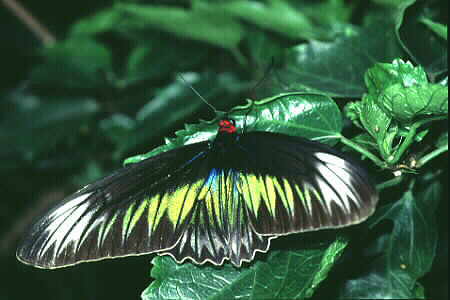 THERE are an estimated 1,200 species of butterflies in Malaysia, in the Peninsula as well as Sabah and Sarawak. Of this
number, I believe I have photographed just over 200 of the more commonly encountered species. Photographing butterflies
is a hobby that I took up nearly 20 years ago. My movements are now somewhat restricted by my health condition
but I still indulge in nature photography whenever "easy opportunities" present themselves.
THERE are an estimated 1,200 species of butterflies in Malaysia, in the Peninsula as well as Sabah and Sarawak. Of this
number, I believe I have photographed just over 200 of the more commonly encountered species. Photographing butterflies
is a hobby that I took up nearly 20 years ago. My movements are now somewhat restricted by my health condition
but I still indulge in nature photography whenever "easy opportunities" present themselves.
In this website, I present a small selection of my butterfly photos. Please
see Pages 2 and 3 for the rest of the selection. If you want to see more butterfly photos, point
your browser to My
Butterfly Gallery. I have also provided links (see bottom of this page) to a few other butterfly
websites.
BELOW: Click on either the thumbnail image or the
name of the species you want to view. This will open a new window with a larger
picture of the butterfly you want to see. You can go on to the next picture
inside that new window. Close that window to return to the main page.
|
Family Papilionidae
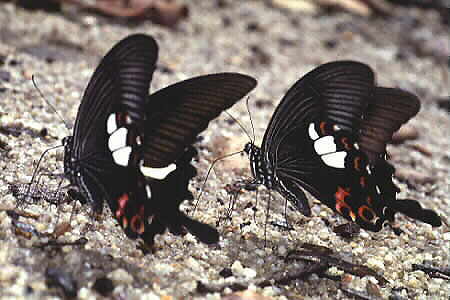
|
The Red Helen (Papilio helenus) is a large, showy species which
flies in open forest country near streams or waterfalls. Like the other papilionids,
the males can be seen drinking at seepages or on riverbanks, either singly or accompanied by
several other specimens, or even other species.
|
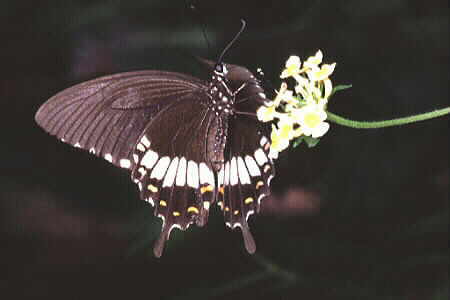
|
The Common Mormon (Papilio polytes) is found near
gardens and villages where Citrus (e.g. lime, lemon, kumquats)
is grown. The female occurs in two forms in Peninsular Malaysia: form cyrus which
looks like the male, and form polytes which looks like the Common
Rose (Pachliopta aristolochiae).
|
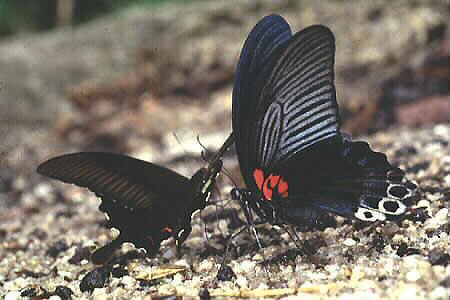
|
The Great Mormon (Papilio memnon) is one of the most interesting
butterfly species because of polymorphism of the female, which may be tailed or tailless.
Only one true form of the male is recognised. The specimen shown here is an abberrant male
which resembles the female form ityla.
|
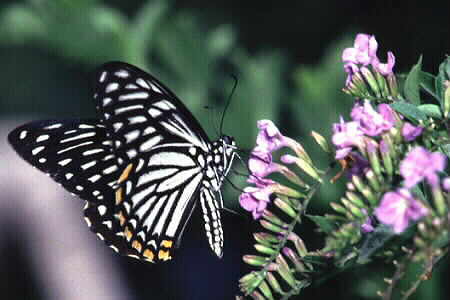
|
The Common Mime (Chilasa clytia) occurs in several forms
that mimic danainine
(milkweed) butterflies. This is form dissimilis which mimics species of Ideopsis,
Parantica and Tirumala. The larvae feed
on the leaves of "wild cinnamon" (Cinnamomum) which is cultivated
as a roadside tree to provide shade.
|
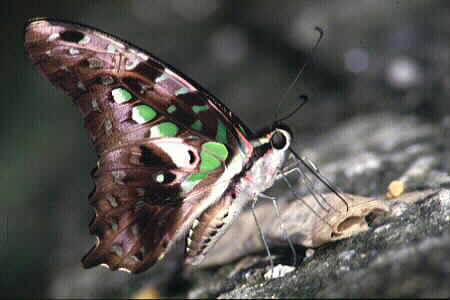
|
The Tailed Jay
(Graphium agamemnon), with apple-green spots on speckled brown
ground and "stubby tails", has a distinctive appearance. It is also known
as the Green-spotted Triangle and Tailed Green Jay. Like other
papilionids, the males of this species can be seen drinking at seepages.
|
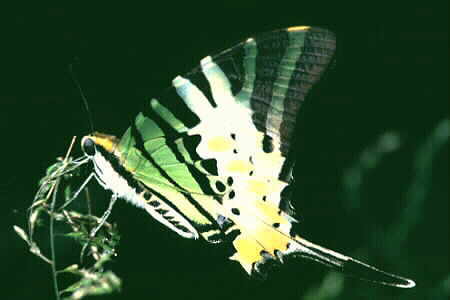
|
The Fivebar Swordtail
(Pathysa antiphates) is another butterfly with a "remarkable"
appearance; it has a long, slender, tapering projection from each hindwing which
looks like a sword. In Peninsular Malaysia, this species is usually found in the
forested lowlands.
|
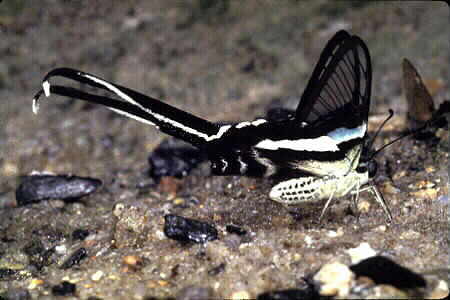
|
The Green Dragontail (Lamproptera meges) looks
like a dragonfly when it is flying. Its wings beat so rapidly that
they appear as a blue haze. The partly-transparent wings and long, drooping
tails give it an appearance unlike that of other butterflies, except
the White Dragontail (Lamproptera curius).
|
Family Pieridae
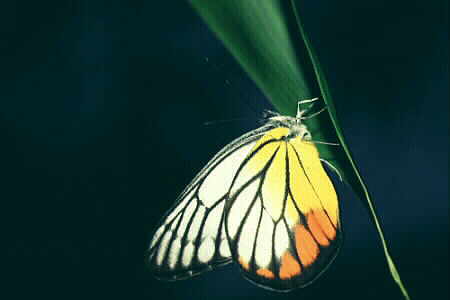
|
The Painted Jezebel (Delias hyparete) frequents open woods and green
patches, sometimes venturing into gardens. Its bright colours and slow flight serve
to warn predators that it is potentially poisonous. It is attracted to nectar-bearing flowers,
especially those of the Indian cherry tree.
|
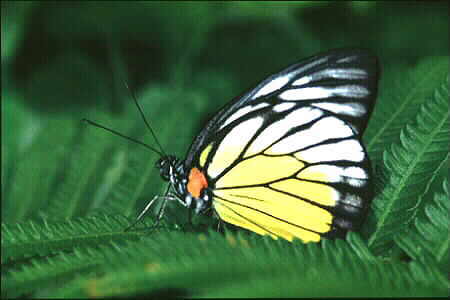
|
The Redspot Sawtooth (Prioneris philonome) is
a forest species which is usually encountered in open spaces near water courses. It may be seen
drinking at seepages together with other pierids and papilionids. It resembles
the Painted Jezebel, but it may not be a mimic of that species.
|
This page revised on 22 May 2005. Copyright © Chin Fah Shin.
|













|














